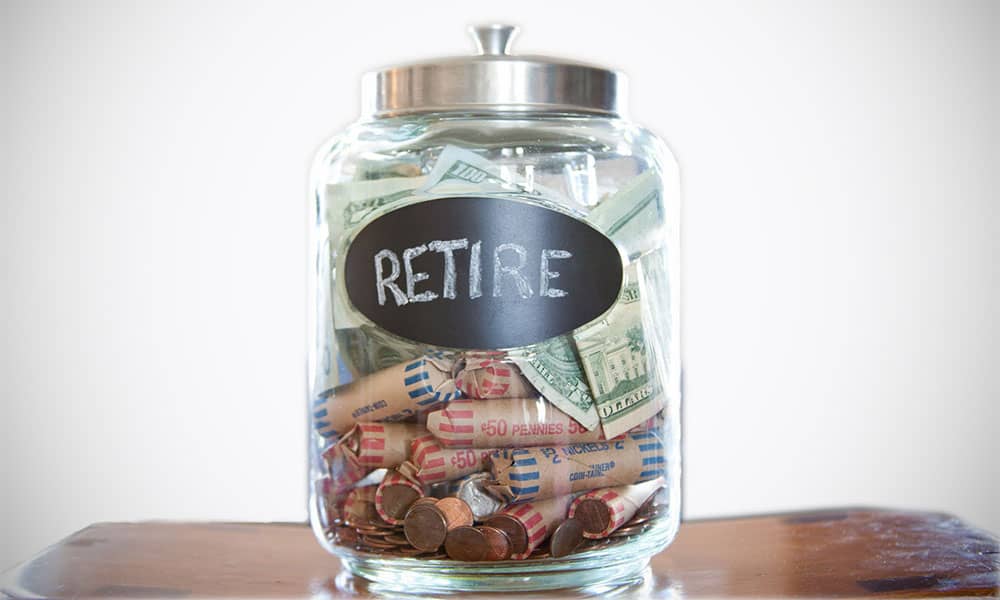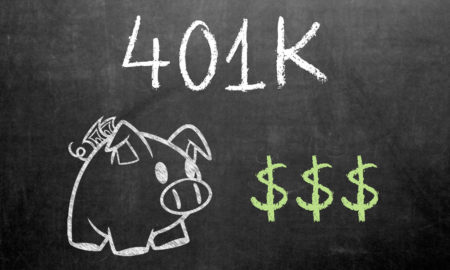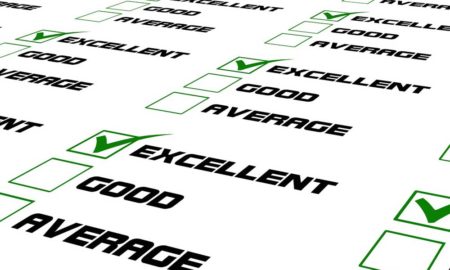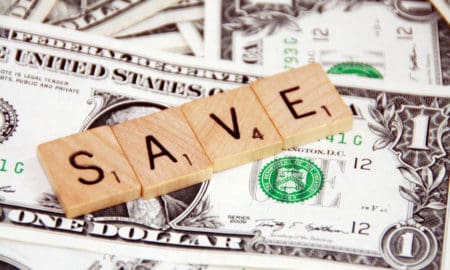

PwC’s Employee Financial Wellness Survey 2017 revealed that 40% of 1600 employees surveyed only had $50,000 saved for retirement.
While 72% of Boomers surveyed have $300,000 or less for retirement, 30% of Millennial and Gen X employees are withdrawing money from their retirement plans just to pay for expenses.
Many people are struggling to save money for their future, some haven’t even started.
If you don’t have a retirement savings yet, know that it’s never too late to start. I asked 49 experts on personal finance to share their retirement plans and investment strategies. So if you’re overwhelmed with all the options, formulas, and retirement planning strategies out there, this article can help you.
Based on the responses, the average retirement goal from the experts we interviewed was $2.3 million, excluding three people who preferred not to give a total number. The lowest was $400,000, while the highest was $12 million.
How Much Money Do You Need To Retire?
Retirement Plans & Conservative Investment Ideas from 48 Personal Finance Experts
1. Adam Chudy of AdamChudy.com
Adam is a strategy and planning analyst, and a Chartered Financial analyst. He writes about personal finance, entrepreneurship and other personal improvement topics. I like his post about the Sunk Cost fallacy, as it presents a logical way to think about big purchases you later regret.
How much money do you need to retire and why?
“I would quit my day job if someone handed me a check for $5 million. I’m building most of my wealth through businesses, instead of my day job. So if my ownership stake reaches $5 million, that’s just going to spur me to see if I can make it to $10 million or more.”
What conservative investment option can you recommend to a friend who’s afraid of risk?
Adam says people shouldn’t look at investment vehicles and categorize them as risky or not risky. Instead, he suggests considering how much you can allocate per asset class to lessen your exposure to risk.
“Most major asset classes, such as stocks, bonds, real estate, and commodities, can all have a place in your portfolio. You can manage the risks by allocating money to each option, according to how risky it is for you.”
If you’re really risk averse, Adam suggests a basic index fund that covers the US or global stock and bond market.
2. Andrew Daniels at FamilyMoneyPlan.com
Andrew started his financial journey as a lost and frustrated employee. He had a good salary, but he didn’t know what else to do with his money besides buying new things. Because he didn’t want to be a 9 to 5 slave, he learned how to control his finances by trying different budgets and investment options. He’s now debt-free and well on the way to financial freedom.
How much money do you need to retire and why?
Andrew didn’t provide a grand total retirement number because he’s trying to earn his retirement income through dividends. The total amount will depend on the yield he earns over time. But he did provide an annual income target.
“I need $50,000 take home in predictable income to feel comfortable in retirement. I will still work once I have this amount, but I consider this number as a base for comfortable living.”
What conservative investment option can you recommend to a friend who’s afraid of risk?
“If you don’t want to lose money, going with a CD or a high rate savings account is the closest to ‘no risk’ I can think off.”
He also warned investors against fear of risk.
“Losing money sucks, don’t get me wrong. But without any risk that means that you will miss out on larger gains. Everything else carries some form of risk; it just depends on your appetite for it.”
Read more: How to Invest 50k
3. Bo Liu of FutureProof MD.com
Bo is a resident physician and personal finance enthusiast who loves writing about financial topics relevant to young medical professionals like himself. He also writes about student loans, investing, and loan management at the Future Proof Detour section of his blog.
How much do you need for retirement and why?
“My goal is $5 million in today’s dollars. That will give me an annual income of $200,000 using the 4% rule. But I’m pretty frugal so I can probably live on 3% withdrawal rate or $150,000 annually.”
What conservative investment option can you recommend to a friend who’s afraid of risk?
“If you can’t tolerate any risk, put your money in an FDIC insured high yield savings account or CD.”
But with proper financial education, Bo believes people can choose an optimal investment option that accounts for their risk tolerance.
4. Bob Lai of Tawcan.com
Bob is a millennial frugalist, investor, photographer, and outdoor enthusiast based in Vancouver. Since starting his journey to financial independence in 2011, he has amassed a dividend portfolio paying over $1000 a month.
How much do you need for retirement and why?
“Our estimate is we need about $800,000 in our investment account to retire in our early 40s.”
This assumes that their core expenses (housing, insurance, food, gas, etc) is $32,000 a year, and their total expenses including donations, eating out, and vacations, is roughly $48,000 a year. Bob also plans to spend a few years of his retirement living in Taiwan or Denmark with his wife.
What conservative investment option can you recommend to a friend who’s afraid of risk?
“That depends on how much time you have before retirement. If you have 20+ years, I’ll show you the long term stock market performance, and explain how stock values go up over the long term. Once you understand this, I’d recommend you purchase index ETFs on board markets like Canadian Index, US Index, or international market index.”
Bob also emphasized the importance of sticking to your strategy. Switching back and forth will cost you a lot of money.
5. Brad Kingsley of MaximizeYourMoney.com
Brad helps people create a plan to get out of debt, pay for college, or live a comfortable retirement. He also provides personal finance coaching on his blog.
How much do you need for retirement and why?
“I know exactly how much I need to retire, because I hit that number and retired early. My retirement magic number was $2.5 million.”
Brad is an avid budgeter, so he has a good grasp of his spending and cash flow. He also didn’t follow the popular 4% rule.
He explains, “Based on studies of historical returns, I decided that a 4% withdrawal rate was too risky for someone who wants to retire early. A 4% withdrawal rate has a good chance of lasting 30 years according to analysis, but its chances of lasting 50 years aren’t good enough for me.”
The withdrawal rate he set is 3.5%. According to his calculations, his retirement funds have an 83% chance of lasting until he’s 107. And that likelihood is going to increase once he starts claiming his social security benefits.
What conservative investment option can you recommend to a friend who’s afraid of risk?
“A conservative, but still well performing portfolio option is a distribution of 15% US Large Cap stocks, 15% US Small Cap stocks, 30% international stocks, and 40% US Treasuries. Back testing shows returns would be close to the S&P 500 Index in the long run, but the volatility will be a third lower.”
Brad adds, “That portfolio mix would have dropped 18% during the 2008-2009 Great Depression, versus a 37% drop for the S&P 500 Index.”
6. Brian Davis of SparkRental.com
Brian is the Co-founder and Lead Real Estate and Personal Finance blogger at Spark Rental. He has 15 rental properties, and also provides free video training about earning passive income through rentals at SnapLandlord.com
How much do you need for retirement and why?
“I aim to have $750,000 for retirement. Because I own several rental properties, about $500,000 of my retirement money would go to paying off my mortgages. But after that, the rental income would be enough for me to live on indefinitely. I also have about $250,000 in equities, purely for diversification and risk management.”
What conservative investment option can you recommend to a friend who’s afraid of risk?
“Real estate investments can be extremely low-risk, but like any other kind of investment, people with no experience can lose a lot of money.”
Brian is quick to admit that he teaches real estate investing for passive income, so he’s partial to it.
He continues, “Rental properties can be purchased with very predictable returns, for people who know how to calculate them. It’s not hard to do, it’s finding good real estate deals that takes time and work, unlike index funds that take no work but leaves you no control over returns.”
Real estate, can be a conservative investment, according to Brian, but it all depends on the investor’s knowledge and willingness to learn.
7. Carlos Gomez of CommonCoreMoney.com
Carlos, aka “Homie G” is a teacher, investor, success coach, and personal finance blogger at CommonCoreMoney.com. He’s been featured on Money magazine and the San Diego Union Tribune. You can also follow him on Twitter at @COsvaGomez.
How much do you need for retirement and why?
“My wife, Jessica, and I will need a total of $4.45 million in total assets to retire at age 65 and live comfortably for 30 years.”
Carlos’ explanation of how he came up with this number is detailed and focuses on his current and future expenses.
“We spend $37,000 a year on mortgage, property taxes, insurance, and maintenance. We spend about $29,000 a year on all remaining living expenses. Therefore, we are spending about $66,000 a year to maintain our standard of living.”
Carlos knows their current annual expenses will change after retirement. His mortgage will already be paid up by then, but he expects the property maintenance costs, taxes, and insurance cost to increase over time.
“Using a 2.5% yearly rate of inflation, I estimate my housing costs will be about $17,000 when I retire in 2042. The $29,000 in living expenses will be about $54,000 factoring inflation at 2.5% once again. That means we’ll need $71,000 in 2042 to maintain our current standard of living.”
What conservative investment option can you recommend to a friend who’s afraid of risk?
“I would recommend Certificate of Deposit (CD) laddering to a friend afraid of investment risk. With the Fed stating they will raise interest rates twice this year, I’d go with a ladder of CDs with shorter maturities, from 6 months to 30 months.”
Yes, the yields are smaller but CDs are FDIC insured up to $250,000 per person per bank, unlike stocks and other paper assets.
8. Catherine Alford of CatherineAlford.com
Cat is a personal finance expert and an inspiration to work at home moms everywhere. She once found herself in debt with no job prospects on a remote Caribbean island, but her tenacity helped her find a way to make a living online as a freelancer writer.
How much do you need for retirement and why?
Catherine’s total retirement target is a range instead of a definite number, but her target annual income is specific.
“I’m personally aiming for a number between $1 million to $3 million, so I can earn an annual income of $100,000 or more. That will allow me to travel, pursue my hobbies, and help my future grandchildren with their education.
What conservative investment option can you recommend to a friend who’s afraid of risk?
“I invest in low cost invest funds, so that’s what I’d recommend to anyone afraid of risk. Look for a simple S&P 500 index fund, and talk to a trusted financial advisor if you’re not sure of your options.”
9. Chad Carson of CoachCarson.com
Chad is an experienced real estate investor, father of two kids, traveler, and writer for other personal finance websites (including InvestmentZen!). His website is mostly about real estate investing, but he also writes about business management and personal development.
How much do you need for retirement and why?
“For a simple retirement, I need a minimum of $3000 a month or $36,000 a year. This covers the basic expenses of my small family of four.
This income can translate to different numbers depending on where you invest. But a $600,000 equity invested in rental properties can easily produce this monthly income, assuming I purchase properties with a 6% return on investment.”
Chad also emphasizes that because the investments are in real estate, he doesn’t need to worry about depreciating capital like other paper assets. If he buys quality properties in good locations, the rental rates will likely keep up with inflation.
What conservative investment option can you recommend to a friend who’s afraid of risk?
“I recommend a small portfolio of five to 10 fully paid and clear rental properties.”
I think he’s one of the few to mention rental properties as a conservative investment option, so it’s interesting to read his reason for this.
“The debt free properties will produce a consistent income. And because they’re fully-paid, you don’t have to worry about another real estate bubble or depression. You can just reduce the rental rates. The small number of properties also makes it reasonable to manage.”
Read Carson’s blog for more information about this strategy.
Read more: High Return Investments
10. Chris Mullen of MyRetirementPlanner.info
Chris is a single dad of six kids, living paycheck to paycheck. He wrote My Retirement Planner to document and figure out his financial plans and future.
How much do you need for retirement and why?
“I need $500,000 in retirement. My plan is to retire at 65 and a life expectancy of 85 years, which means I’ll need 20 years of income. Multiply that duration to my target annual income of $25,000 and you’ll get $500,000.”
Sam’s computation already includes Social Security benefits, and he hopes it can make up for half of his desired annual income of $25,000. He’ll make up the rest of the $25,000 through a part-time job, investments, and his savings.
He also knows that $25,000 isn’t much, but he has plans of moving somewhere less expensive.
He continues, “The $25,000 goal includes rent, food, and health insurance, but this assumes I end up moving to a warmer climate in the Southeast. I also researched the recreational vehicle lifestyle and found examples of people living on less.”
What conservative investment option can you recommend to a friend who’s afraid of risk?
“An ETF or Exchange Traded Fund is probably the most popular conservative investment choice these days. ETFs make it easy to participate in the stock market without picking stocks yourself.”
11. Craig Stephens of RetireBeforeDad.com
Craig Stephens runs the blog Retire Before Dad, where he documents his goal of retiring before his father, and the lessons he learned about travel, investing, early retirement, and personal finance.
How much do you need for retirement and why?
“I anticipate to need about $1.5 to $2 million, and to be completely debt-free to fund our desired retirement lifestyle. This range accounts for a combination of factors, including expected expenses, the 4% safe withdrawal rate, inflation, and a healthy buffer.”
Craig also said the budget includes in-state college tuition for his three kids.
What conservative investment option can you recommend to a friend who’s afraid of risk?
“One conservative investment option I can recommend is the real estate crowdfunding platform, Fundrise. Real estate crowdfunding is relatively new, but it gives ordinary investors access to high-quality diversified real estate investments through their eREIT (Real Estate Investment Trust) products.”
The minimum investment at Fundrise is $1000, while the returns range from 8% to 12%.
12. ESI of ESIMoney.com
ESI Money is a blog geared towards achieving financial independence through earning, saving, and investing. The writer is a an executive who retired unexpectedly at 52 after things didn’t work out at his job and he realized that he already has enough to retire, even though what he had was far less than his original retirement goal.
How much do you need for retirement and why?
“I always thought I need $4 million or $100,000 a year to retire.”
But after considering his savings, different income sources, and cost of living estimates, he decided to retire at 52. He now believes many people can retire on $1 million or less.
Here’s his computation from his blog:
“I have current liquid assets a bit over $600,000. I can earn about $60,000 a year conservatively— $50,000 from real estate and $10,000 from P2P investments. On the high end estimate, I could bring in closer to $70,000 or more.”
This means he only needs to draw $40,000 a year from his saved up funds of $600,000 to achieve his target retirement income of $100,000 a year.
ESI continues, “At $40,000 a year, the $600,000 would last for 15 years, which is more than enough time to get the rest of my assets. This scenario assumes I get no income from any other source, which is unlikely. I’d at least like to teach a bit and my wife may want to work as well.”
What conservative investment option can you recommend to a friend who’s afraid of risk?
“This relies on too many variables to answer, such as when they will need the money, their risk tolerance, and how much of their entire net worth they’re investing.”
13. Daniel Packer of SweatingtheBigStuff.com
Daniel is a mid-20s employee in an online advertising company. He created Sweating the Big Stuff to share the practical lessons he’s learned about handling money, from small financial wins like negotiating a haircut, to more life-changing wins like negotiating a lower rent, or making friends using personal finance.
How much do you need for retirement and why?
“I personally need about $4 million in retirement so I can live on $160,000 a year without outliving my savings.”
Daniel explained that he projected this amount using an 8% return rate on a $250,000 investment by the time he’s 30. He’d have $2.5 million when he turns 60 and about $4 million by the time he’s 66.
What conservative investment option can you recommend to a friend who’s afraid of risk?
“I recommend considering a robo-advisor that takes your risk-tolerance into account. And don’t check your balance too often.”
Daniel continues, “I have several friends who missed out on investing and stuck their money in a savings account instead. Just imagine how much they could’ve earned if they put their money in a conservative portfolio.”
14. David Bakke of MoneyCrashers.com
David is a contributing author at Money Crashers, and the author of the e-book, “Don’t Be a Mule: A down-to-earth, common-sense approach to saving more, spending less, and generating extra money in your everyday life.”
How much do you need for retirement and why?
“I plan on having $500,000 in retirement, based on calculations I did using a few online calculators, and what I need as far as travel, healthcare, and other expenses.
What conservative investment option can you recommend to a friend who’s afraid of risk?
“A few conservative investment options for those afraid of risk are FDIC insured money market accounts, CDs, and bonds.”
15. David Lester of iHeartMoney.ca
David worked part-time at Merrill Lynch in college, before he worked in the Bank of Montreal and later moved on to advertising. He now helps others gain a better control of their finances through his books and coaching services.
How much do you need for retirement and why?
Like the others listed here, David plans to have everything paid off before he retires.
“I plan to have CAD $5 million (USD 4,0180,00 as of today’s conversion ) in dividend paying investments that will earn me $250,000 at a 5% yield before taxes. That will roughly amount to $150,000 for 30 years assuming the inflation rate remains at 3%. I’m investing my money now and working hard to get my current yield to pay off my mortgage as fast as I can. After that, I’ll concentrate on investing to reach my CAD $5 million goal in 30 years.”
What conservative investment option can you recommend to a friend who’s afraid of risk?
“Buy a low-cost dividend exchange-traded fund (ETF). It will have stocks of companies with a history of solid returns, like Coca Cola, Disney, and Microsoft.”
16. David of ZeroDayFinance.com
David wrote a controversial and well-received article on retirement, “If You Want To Retire, Stop Spending Money On Fancy Lunches And Invest”. Read it to learn how you can retire a millionaire at 40, if you just skip your fancy coffee and save your lunch money every day.
How much do you need for retirement and why?
“I need at least $2 million invested with a paid off house to feel comfortable in retiring. With $2 million in an aggressive investment mix (60% stocks, 40% bonds), I could earn 3% to 4% average returns, giving me an annual income of $60,000 to 80,000.”
David also said having $2 million in retirement can help him weather extended market downturns. Even if his portfolio’s value dropped to $1 million, he can live on $40,000 a year.
What conservative investment option can you recommend to a friend who’s afraid of risk?
“Invest in safer assets, like bonds. I would recommend AGG, BlackRock iShare’s EFT that invests in US investment-grade bonds. It pays more than treasury notes, but poses less risk compared to stocks. You can also get about 2% in dividends distributed over the course of a year.”
17. Eric Rosenberg of PersonalProfitability.com
Eric writes about growing your income, investments, and enjoying life while spending responsibly, and he also hosts a podcast on the same subject. You can also join his 7-day course on increasing your profitability.
How much do you need for retirement and why?
“My big number is $4 million. While this is more than I need to retire, it will let me retire comfortably at any age. If I can earn a 5% return on a $4 million nest egg, I will get a $200,000 in annual income.”
Eric admits that his retirement goal is more than what he earns today, but he’s still aiming for that goal because he knows that income level will protect him from inflation.
What conservative investment option can you recommend to a friend who’s afraid of risk?
“Put 90 of your money in a low cost S&P 500 index fund, and the remaining 10% in a low cost short-term government bonds fund.”
This is based on Warren Buffet’s 90/10 rule for conservative investments. Just keep saving your money and allocating it in that way, and you’ll be on track to a great retirement.
18. Glenn Carter of TheCasualCapitalist.com
Glenn is an investor, family man, and entrepreneur who runs several part-time businesses to supplement his income and live a flexible life. He’s also an expert on the sharing economy. If you hate budgeting, you might enjoy his alternative strategy to keeping a budget.
How much do you need for retirement and why?
“My personal retirement magic number is $1,050,000, which I came up with by totaling my monthly expenses and multiplying it by 25.
My family and I spend about $3,500 a month on everything, so if I multiply that by 12 for one year, then multiply the product to 25 that will give me $1,050,000.”
What conservative investment option can you recommend to a friend who’s afraid of risk?
“I personally invest in real estate. If done with proper education, real estate is the most conservative investment option you can have.”
But if you prefer something a bit more passive, or doesn’t require any subject expertise, Glenn recommends,
“Get a robo-advisor service like WealthSimple or Betterment, so they can automate your retirement savings and you don’t need to think about it.”
19. Grace of GracefulRetirement.Blogspot.com
Grace is a middle aged woman who writes about the challenges of saving for retirement and minimizing debt late in life, with a middle class income.
How much do you need for retirement and why?
Grace’s retirement funds nearly got wiped out because of the last recession, but she didn’t stop funding it. She thinks they’re now almost fully recovered.
“At this point, I have nearly reached my (retirement) goal of $400,000. According to projections, I’m actually on target to have $450,000 at age 69.”
You might think this is on the low end of the scale, but keep in mind that Grace is already nearing retirement, and she plans to continue working until 71 to support her grandson’s high school education.
20. Jacob Lumby of CashCowCouple.com
Jacob Lumby is the Content Director and one of the trios who run Cash Cow Couple. With his wife, Vanessa, they teach other married couples how to save money, pay off debt, and build a stable financial future.
How much do you need for retirement and why?
“I would feel comfortable retiring with $1 million in available assets. Using 3% as a conservative withdrawal rate, a $1 million portfolio will produce $30,000 a year. That amount will be enough to cover all of our expenses because of our minimalist lifestyle.”
What conservative investment option can you recommend to a friend who’s afraid of risk?
“Risk and rewards are inseparable for investors. Low-risk investments don’t offer large potential returns. But there are options for people less comfortable with investment risks.
Real estate is more stable compared to stocks, and firms like Fundrise make it easy to invest in commercial real estate offerings without excessive fees.”
Jacob also suggested short-term bond funds as a conservative investment option, for investors who think real estate isn’t for them.
21. James M. Dahle at WhiteCoatInvestor.com
James is an emergency physician who got fed up of the lies and rip offs he experienced while dealing with finance professionals. He started White Coat Investor to help doctors and other professionals with their ‘second job,’ which is to manage their own income and investments.
How much do you need for retirement and why?
“We spend about $150,000 a year, but with taxes and charitable contribution, it might be closer to $200,000. If you multiply that by 25, you’ll get my retirement target of $5 million.
Many high-income professionals, especially the good savers, don’t realize that they don’t need to replace even 70% of their pre-retirement income to maintain their standard of living.”
In this article, James explained that high-income earners are taxed more while they’re still working, but will be taxed significantly less after retirement. Less taxes means an increase in net income. He also cited other reasons specific to medical professionals.
What conservative investment option can you recommend to a friend who’s afraid of risk?
“Low risk investments require a savings rate far higher than what most people are willing. That’s why it would be a disservice for me to recommend a ‘safe investment’ option without informing people of a riskier alternative – earning too low of a return to meet their financial goals.”
He believes in what Phil Demuth said,
“You should invest in the way that has the greatest prospect to fulfill your investment goals. That might mean taking more or less risk than you would prefer.
If you’re a sensitive soul who can brook no paper losses, the solution is to get a grip, not to invest ‘safely’, if that locks in running out of money when you are old.”
22. Jamie Jeffers of MediumSizedFamily.com
Jamie is a mom of five kids who writes about their family’s journey to paying their credit card debt. She also writes about saving money, getting out of debt, frugal living, and frugal recipes.
How much do you need for retirement and why?
Jamie’s husband was advised that they’d need at least $75,000 a year during retirement, which is more than two million dollars.
Realizing that number is too much and a tad out of reach, Jamie used FIRECalc to help her determine how much they’ll need to retire based on past market performance.
“Our magic number is $1.1 million plus all our current debts and mortgage, because we don’t want to retire with debt. That’s a number we can easily reach if we invest a part of every paycheck”
What conservative investment option can you recommend to a friend who’s afraid of risk?
Jamie thinks people are intimidated to invest their money because of what they see in movies. Timing the market, buying high, and selling low—all that stuff is overwhelming for a newbie investor.
“Don’t worry about timing any markets. Find mutual funds with a solid track record and dump money in it regularly.”
Yes, the market is bad at times but she adds, “If you have a decade or more until retirement, the odds are you’ll come out ahead.”
23. Jamila Souffrant of JourneytoLaunch.com
Jamila is a Certified Financial Education Instructor (CFEI), blogger, podcast host, and money coach. She helps others gain clarity about money and create an actionable plan to reach their goals.
How much do you need for retirement and why?
“In order for me to retire in six years (at age 40), my husband and I would like to have:
- $1 million saved up across our retirement and investment account
- A paid off primary mortgage”
Jamila’s plans to retire in six years might seem ambitious to you, but she’s had years to prepare and she started investing early. She purchased her first real estate property at age 22.
“My early retirement plans assumes my husband would still be working. We’d live off his take-home income and only tap into our investments as necessary. If we can grow the $1 million at a conservative 6% annual return without withdrawing from it until my husband retires in 15 years, that amount would grow to about $2.4 million.”
She also explained that the $2.4 million, along with her husband’s pension and the income from their investment properties would generate enough income for them to retire comfortably.
What conservative investment option can you recommend to a friend who’s afraid of risk?
“Invest in low-cost index funds. This investment option gives you a sampling of the entire stock market, so you can hedge against some fluctuation in more risky investments.”
24. Jim Poolman of IndexedAnnuitiesInsights.com
Jim is the Executive Director of Indexed Annuity Leadership Council (IALC) and former insurance commissioner of North Dakota. The IALC provides comprehensive and accurate information about the use of indexed annuities.
How much do you need for retirement and why?
“With healthcare costs likely to exceed more than $250,000, I, like many baby boomers, will need more than $1 million to retire comfortably.”
Like the other financial experts in this article, Jim also considered his cost of living, and dreams of travel when he calculated his retirement goals. He also used retirement calculators to make the process easier.
He continues, “I like the calculator at FIAinsights.org because it allows you to hone in on specific aspects of retirement planning. You can get a retirement number or plan that’s specific to your situation after answering a few questions.”
What conservative investment option can you recommend to a friend who’s afraid of risk?
“The best approach is to balance your portfolio. Look into a fixed indexed annuity, which provides increased sustainability while mitigating external risks to your investment. The market may swing, but your principle investment will be protected.”
The fixed indexed annuity he recommended also provides a guaranteed lifetime income, so there’s no risk of outliving your earnings. Be warned though, investments like this are usually expensive.
25. Jon Dulin of MoneySmartGuides.com
Jon started investing in stocks when he was 18. But that didn’t mean he was free from financial struggles. He lost $25,000 during the housing bubble and once owed $10,000 in credit card debt.
His portfolio has grown over $700,000, and he now shares the strategies and lessons he used to get out of debt and grow a sizable portfolio.
How much do you need for retirement and why?
Jon and his wife want to retire early and live up to age 95, which means they need to save a lot of money for a long retirement.
“Using a Monte Carlo simulator, we came up with a $3 million retirement goal that already factors in our savings and retirement expenses. But we didn’t include Social Security because we’re not sure if it will still be around by the time we retire.”
What conservative investment option can you recommend to a friend who’s afraid of risk?
“Invest in a balanced mutual fund that puts 60% of your money into stocks and the remaining 40% into bonds.”
A high bond allocation (40%) protects you from stock market dips. But you won’t enjoy market surges either. If your goal is consistency and stability, this is a sensible strategy.
26. Jonathan H. Todd of JonathanTodd.com
Jonathan is a Chartered Financial Analyst, he’s also a data analyst and author at NerdWallet. He writes articles that help readers make sense of the current economy and how it affects regular investors.
How much do you need for retirement and why?
“The traditional rule of thumb is to replace 80% of your income, but I’m planning to replace 100% of my income for two reasons:
Saving 80% of your income is hard enough, so if you aim to save higher, you’re likely to save more.
Transitioning into retirement is easier if you save more when you’re still working”
He also explained how saving more of your annual income will make your retirement transition easier.
“If you only save 10% of your annual income, you’ll be used to spending 90% of your income during your active years. But if you save 20% of your income, you’ll be used to living off 80% of your salary.”
Saving more means you’re more likely to hit your retirement goal, and you’ll be more adjusted to the decreased spending during retirement.
What conservative investment option can you recommend to a friend who’s afraid of risk?
“For a millennial like me, the definition of risk is different compared to somebody closer to retirement. For people my age, the bigger risk isn’t investing in conservative investment options, it’s NOT saving enough.
It’s risky to invest too much in bonds or other low risk assets, because those equal to lower returns.”
27. Kalen Bruce of MoneyMiniblog.com
Kalen is a bibliophile and active duty airmen, who used to be $24,000 in debt before he started learning about personal finance. He now writes budgeting and investing guides to help others create healthy money habits.
How much do you need for retirement and why?
“I need $2 million to produce an annual retirement income of $60,000 assuming a 6% gain. That’s a reasonable expectation on a safe investment, such as a bond.”
Kalen thinks $2 million is more than enough, especially after getting a military retirement benefit and their kids moving out by the time they retire.
What conservative investment option can you recommend to a friend who’s afraid of risk?
“I recommend index funds to everyone, regardless of their risk level. There are plenty of conservative index funds, too. But if you can’t stomach the stock market, investing in real estate is the way to go.”
28. Lance Cothern of MoneyManifesto.com
Lance is a licensed CPA who writes about spending smarter, earning more, and investing money. He and his wife also paid off more than $80,000 in student loans in 3 years.
How much do you need for retirement and why?
Lance says he and his wife need $1.4 million in today’s dollars to retire. Here’s how he came up with that number.
“Our target is $60,000 per year in retirement income. We also included a conservative estimate of $1,500 per month in Social Security income in today’s dollars, even after future changes are made, which resulted to a need of $42,000 per year in other income. We multiplied that number by 33.33 to get the total amount we need based on a more conservative 3% withdrawal rate.”
What conservative investment option can you recommend to a friend who’s afraid of risk?
Lance’s conservative option isn’t an investment per se, but the savings are worth it.
“If I had a friend scared of risk, I’d recommend they pay their mortgage down. The rate of return is guaranteed, because you’ll no longer be paying interest on the additional principal you’ve paid off.”
29. Lauren Bernardo of CheapStudents.Ca
Lauren admitted this was a tough question for her, because she just graduated three years ago. But she’s already invested part of her salary early, so that puts her ahead of her peers. Lauren’s logical calculation about her retirement target is also a good starting point for younger readers.
How much do you need for retirement and why?
First, she considered how long her retirement income should last and whether or not she’ll be working during retirement.
“Given the average life expectancy of a Canadian woman born in the early ‘90s, I could be kicking until I’m 80. But based on my workaholic tendencies, I might still be working after I retire.”
Then she listed her target retirement savings:
“I’ve already started saving for retirement through my company pension, and RRSP, TFSA, and Self-Directed RSP through my bank. I plan to save about 10% of my income during my 20’s and 15% to 20% starting in my 30’s.
That said, the ballpark number I’m targeting is between $1.5 to 2 million dollars with a return of 4% to 6% through a safe portfolio equally split into GICs and Canadian Bank stocks”
What conservative investment option can you recommend to a friend who’s afraid of risk?
“As a Canadian investor also scared of risk, I would suggest they build a portfolio of 50% GICs and 50% Canadian Bank stocks.
I’ve only been buying and selling stocks for 5 years, but I’ve seen relatives retire comfortably and early because of their investments in high dividend stocks.”
30. Maria Nedeva of TheMoneyPrinciple.co.uk
Maria founded The Money Principle to teach people with financial problems how to build sustainable wealth. Even with a business school degree, she racked up $160,000 in debt last 2009 but she paid it all off in 2013. The Money Principle is a collection of the lessons she’s learned after paying her debt and her unique strategy to building a sizable investment portfolio.
How much do you need for retirement and why?
“I need about 1.5 million GBP (1,971,270 USD as of today’s conversion) to retire. I came up with this number using the assumption that I will retire at 58—not too far in the future for me—and that my annual spending is 40,000 GBP.”
Maria used the retirement calculator on her website, which took into account the inflation rate, her age, and possible investment yield. She also predicts the 1.5 million GBP will sustain her until she’s 92.
What conservative investment option can you recommend to a friend who’s afraid of risk?
“I recommend one of the many digital wealth managers available, like Betterment, and Scalable Capital. These services help people cope with their risk aversion by allowing them to specify the risk they’re comfortable with.”
Robo-advisors also provide information about an investment vehicle’s historical returns.
31. Matt Reiner of Getwela.com
Matt is the CEO and Portfolio Manager of Wela, a financial planning software that provides users personalized financial advice and a host of budgeting and financial tracking tools. Check out their free e-book ‘Economic Shutdown: 30 Day Financial Cleanse.’
How much do you need for retirement and why?
“I need to save $2.2 million to retire. I based this number on my current expenses plus the inflation rate. Then I deducted my monthly mortgage and the cost of raising kids to that number.
While Matt doesn’t have kids yet, he already plans not to retire until his kids are independent and all his debts are paid off.
After calculating his monthly expenses, Matt came up with an estimate of how to generate his monthly expenses based on several investments. He adds,
“I determined how much of a nest egg I need to earn via the dividend rate of my stocks, the interest rate I earn on bonds, and the distribution rate I get from other investments, like real estate.”
His long term goal is to earn enough not to touch the principal funds during retirement. He also didn’t account for social security pension, preferring to leave that as a buffer in case the market changes.
What conservative investment option can you recommend to a friend who’s afraid of risk?
“Buy short-term bonds to start getting comfortable with investing. Although bonds won’t provide huge financial gains, and they could be affected by inflation and low yields, this will help anyone learn the ropes of investing.”
Matt also suggested getting an ETF from a specific industry, preferably one with companies you are familiar with, once you get comfortable in investing.
32. Michael Banks of TheFortunateInvestor.com
Michael, aka Mr. Fortunate Investor, is an entrepreneur and former manager in the financial services industry. He believes in building long term wealth by first saving to invest and then later on investing to save money.
How much do you need for retirement and why?
“I need at least $5 million in investable assets, which means non-house and non-tangible property.”
Michael also explained that having $5 million in investable money is considered to be a high net worth mark for financial money managers.
What conservative investment option can you recommend to a friend who’s afraid of risk?
“A conservative investment portfolio comprised of 60% fixed income, 35% equity investment or stocks, and 5% in a high yield savings account (cash equivalent).”
33. Mike Scanlin of BorntoSell.com
Mike is the CEO of Born to Sell, but before that he worked in investment banking, venture capital, and software engineering.
How much do you need for retirement and why?
“My retirement goal is $2 million because I expect to earn an 8% annual income through a combination of dividends and covered call writing”
But he’s not going to use the whole 8% for retirement. Mike adds, “I will take out 5% a year and use the remaining 3% to pay withdrawal taxes or keep pace with inflation.”
If you’re curious about covered call writing, Investopedia defines it as the strategy of giving a buyer the option to buy your stock shares at a pre-determined price before the option’s expiration date.
What conservative investment option can you recommend to a friend who’s afraid of risk?
“Buy a diversified portfolio of blue chip, large capital, and dividend paying stocks. Then leverage them for monthly income using covered calls.”
34. Miranda Marquit of MirandaMarquit.com
Miranda is a freelance financial writer and speaker. She conducts workshops on personal finance and investing.
How much do you need for retirement and why?
“I think of it in terms of monthly income instead of coming up with a set number for retirement. After looking at my expenses, potential expenses, and accounting for inflation, I will need about $4,500 a month during retirement.”
Miranda knows her healthcare costs will likely increase during retirement, and that she’d have to cut back on her writing work at some point.
“If I go with $4,500 a month and assume the 4% rule, I would need to save up to $1.35 million whenever I decide to stop working.”
But she admits she’s already living a semi-retirement lifestyle, because she works from home and travels. She added,
“I’m not on a traditional retirement track, because I have businesses and other investments that supplement my writing income.”
35. Neil Maxwell of MaxwellHealthPlanning.com
Neil is the CEO of Maxwell Wealth Planning and a former Financial Education Counselor at Pricewaterhouse Coopers.
How much do you need for retirement and why?
“I think I need about $4 million to $5 million in today’s dollars to retire comfortably and not worry about money again.”
What conservative investment option can you recommend to a friend who’s afraid of risk?
Neil is a Certified Financial Professional so he didn’t want to suggest or recommend a particular investment option. Instead he wanted to inform readers about the different types of risk in investing.
“There is more than one kind of risk to be afraid of. People think their portfolio going down in value is the only risk, but there are other risk factors as well.
This includes the risk of not hitting your goals, and the risk of the money in your savings account having less purchasing power in a year.”
36. Nicole Couloute of NicoleCouloute.com
Nicole has a Master’s in Accounting, which she uses in her quest to educate and empower women to be financially independent. She hosts workshops and speaks at conferences for women about investing, building wealth, and saving on taxes.
“I’m saving $3 million for retirement, which roughly equals to a $100,000 annual income for 30 years.”
What conservative investment option can you recommend to a friend who’s afraid of risk?
“Invest 10% in a mutual fund that pays dividends and has a profitable history. You can also find a passive income stream that requires the least amount of effort, to help build your nest egg.”
37. Paul Koger of FoxyTrades.com
Paul is a fan of day trading, specifically the Swing Trading strategy. He writes about day trading basics, resources, and strategies at his website, Foxy Trades.
How much do you need for retirement and why?
“I personally need $600,000 to retire plus a $100,000 safety buffer if I outlive my retirement funds for two to four years. That’s based on how much I would need to earn $5000 a month on a 10% average annual return.”
Paul admits he only needs $2000 a month, but he’s aiming for the extra $3000 to maintain a good lifestyle that includes some hobbies and traveling.
What conservative investment option can you recommend to a friend who’s afraid of risk?
He suggests an investment strategy similar to the conservative part of his portfolio,
“A mix of index funds and residential real estate, leveraged up to 50% to increase return on equity.”
It’s also helpful to use the best platform for swing trading.
38. Pauline Paquin of MakeMoneyYourWay.com
Pauline created Make Money Your Way to help others earn a living on their own terms, whether it’s through entrepreneurship, freelancing, real estate, or other alternative investments.
How much do you need for retirement and why?
“I spend less than $1,500 on a regular month, but I feel safer aiming for around $3,000. Using a 4% safe withdrawal rate and about 25 years of retirement, I will need about $900,000 for retirement.”
What conservative investment option can you recommend to a friend who’s afraid of risk?
“Stick to index funds, max out your 401K and Roth IRA. Take advantage of company matching. You should be fine if you have a few decades before you retire.”
39. Phil Risher of YoungAdultSurvivalGuide.com
Phil paid of $30,000 in student loans in 1 year with a $48,000 annual salary. After that he bought his first house with cash when he was just 25 years old.
How much do you need for retirement and why?
“I project that I need $700,000 to get $42,000 at a 6% annual return.”
He thinks this amount is enough because he plans to live a debt-free lifestyle before and during retirement.
What conservative investment option can you recommend to a friend who’s afraid of risk?
“I don’t make recommendations on investment because everyone is different, and I tend to only look at risky options.”
40. Rich Uncle El of MoneyWatch101.com
“I only need $750,000 for retirement to receive a $30,000 annual income, based on the 4% rule. My passive income from real estate, dividend stocks, websites and other online businesses will also serve as my income buffer during retirement.”
What conservative investment option can you recommend to a friend who’s afraid of risk?
“A conservative investment option for anyone afraid of risk is a mix between index funds and bond funds with a 70:30 allocation to minimize risk. The bonds minimize your exposure to the volatile stock market.”
41. Sam Dogen of FinancialSamurai.com
Sam retired in 2012, just a few years after the Great Depression that rocked even his solid portfolio. He started Financial Samurai in 2009 to help himself and others learn more about investing, real estate, retirement, and other topics related to money’s mysteries.
Thinking about retiring early? It’s not all it’s cracked up to be. Read his article about the dark side of early retirement first before you start planning.
How much do you need for retirement and why?
His response might be helpful to you if you’re also considering an early retirement, and if you’re living in an expensive city.
“My goal was to have $10 million for retirement, excluding the value of my primary residence. That amount will generate at least $225,000 a year in risk-free income based on today’s 10-year government bond yield.”
If you’re wondering why he needs so much, that’s because he’s living in San Francisco, one of the most expensive states in the U.S.
He continues, “It’s expensive living in San Francisco, especially when the median home price is $1.5 million and the cost of private school is between $20,000 to $50,000 a year.”
Sam admits that he could move to a less expensive state, but he likes his current goal so he has as many options as possible.
What conservative investment option can you recommend to a friend who’s afraid of risk?
“Consider CDs, treasury bonds, municipal bonds, and zero coupon municipal bonds. CDs are guaranteed to pay back your principal, plus a fixed interest. They are also FDIC insured. Treasury bonds are backed by the U.S. government, so they should pay you back as well. Municipal bonds are federal and state tax free, if you buy your state’s own municipal bonds.”
42. Sean of MyMoneyWizard.com
Sean is a 20-something banker and financial analyst, who started My Money Wizard after saving $25,000 at 25. Just a year after, he grew his savings to $150,000. He writes My Money Wizard to share demystify the world of personal finance and investing.
True to his word, his writing shows how he explains financial concepts by using tangible examples. His post about what he learned living on a million dollar home, and how that relates to diminishing marginal returns is both funny and enlightening.
How much do you need for retirement and why?
“I save over 60% of my take home pay and am shooting for at least a $750,000 portfolio.”
He’s well on track of that goal, considering how young he is. But he’s not planning on a traditional retirement.
Sean explains, “My goal is early retirement by age 37. Plan B is to keep working until I’m 40 and plan C is to retire a decade sooner than the ‘normal’ retirement age, at around 50”
The question now is, how can he manage such an early retirement? He has about 11 years.
“We’ll assume I never get a raise again. As I keep dumping $33,000 per year into these low risk investments, the beauty of compound interest needs just 11.86 years to snowball that pile of cash to $750,000.”
43. Sharon Marchisello of SharonMarchisello.Blogspot.com
Sharon is the author of the ‘Live Cheaply, Be Happy, Grow Wealthy’ e-book, which is based on her own experience of retiring early, living frugally, and investing money. She also writes about financial fitness and retirement.
How much do you need for retirement and why?
“I set a personal goal of $1 million, because it sounded like plenty of money but still achievable. But since no one really knows how long they will live, and what inflation will be like, I strive to save as much as I can.”
Sharon adds that she also arrived at her $1 million target after using the Rule of 25, where she estimated her monthly expenses, and added it to her expected fixed income, then multiplied the difference by 12 to get a yearly estimate. And finally multiplied the number to 25 to get how much she should earn for a 25-year retirement.
What conservative investment option can you recommend to a friend who’s afraid of risk?
“The most conservative investment option, with a guaranteed return, is the retirement of your own debt.”
Sharon’s response to this question is unique among the responders for this article, but her logic is quite sound.
She continues, “Mot consumer debt carries a higher interest rate than most investment products these days. As you whittle away at the principal, you eliminate the interest expense you would have otherwise paid.”
The less debt you have at retirement, the less money you’ll need to cover your living expenses.
She also recommended other conservative investment options, like a no-load mutual fund.
44. Sudipto Basu of OneCentataTime.com
Sudipto is the Founder of One Cent at a Time, where he blogs about personal finance and productivity. He’s an advocate of taking low-interest personal loans to pay off high-interest credit card balances to escape debt faster.
How much do you need for retirement and why?
“I need at least $1 million to retire. My mortgage will be paid off by the time I retire 23 years from now. My son’s college would by fully paid, too. So I’ll have nothing else to pay for other than food, health, entertainment and travel for two people—only $24,000 in today’s money.”
Sudipto used the 4% rule on a $1 million retirement to come up with a withdrawal rate of $40,000 a year. He added,
“I didn’t factor in social security income because that’s uncertain. Any income from Social Security will just be used for more travel and charity.”
What conservative investment option can you recommend to a friend who’s afraid of risk?
“A CD ladder is the best option in my opinion. It has the least risk and it’s almost as good as annuities in terms of return. I’d also recommend investing in bonds, as it has a lower risk compared to stocks and ETFs.”
45. Todd M Ingwersen of MyHarvestGroup.com
Todd is a Certified Financial Planner and Certified Investment Management Analyst. He’s the Chief Investment Officer of My Harvest Group, where he designs and executes the firm’s investment strategies.
How much do you need for retirement and why?
“I would need about $12 million to retire in today’s dollars or $25 million after inflation. I would like to maintain a cash flow of $40,000 in after taxes income a month, or $480,000 a year.
Using a 4% withdrawal rate and assuming no pensions or social security—to be on the conservative side—that comes up to $12 million ($480,000 divided by 0.04)
What conservative investment option can you recommend to a friend who’s afraid of risk?
“In today’s low interest rate environment, a fixed or variable annuity can guarantee a living and or death benefit. Although they are more expensive, they can guarantee a higher income stream during life.”
46. Tony Hellenbrand of FoxRiverCapital.com
Tony is a Registered Investment Advisor who helps families and business owners with their succession planning and retirement. He’s also the author of ‘Conversations That Count: A common sense guide to finding the right advisor, growing wealth faster, and retiring earlier than ever.’
How much do you need for retirement and why?
“I need about $4000 a month after taxes in today’s dollars for retirement. I arrived at this number by subtracting expenses I won’t have during retirement from my income, such as mortgage, childcare expenses, and retirement savings.”
When asked for a sum total of how much he plans to save, Tony explained how he views retirement as a new phase in life, not just an event with a single lump sum.
He explains, “I don’t believe you can figure out a level of assets, or a specific number needed for retirement. You can figure out the income you need, and the sources of that income, but the traditional view of retirement as an event instead of a new phase of life isn’t accurate. It’s just a different inflow outflow situation.”
What conservative investment option can you recommend to a friend who’s afraid of risk?
“Many investors need to reframe the way they think of risk. You can make 3% in something guaranteed and still lose money over the long haul after inflation.”
47. William Charles of DoctorofCredit.com
William is an investment banker and the editor for Doctor of Credit, a website he stared to augment the lack of in-depth articles about credit scores and other financial products. If you’re looking for a good credit card with sign-up bonuses, he has a comprehensive list worth checking out.
How much do you need for retirement and why?
“All in, I’d like to retire with about $1 million in liquid assets, not including property.”
William says this number is significantly less than if he already had children.
What conservative investment option can you recommend to a friend who’s afraid of risk?
“Low index funds such as Vanguard. This is the same approach suggested by Warren Buffet, and it’s one I strongly believe in.”
48. William (“Bill”) Stack of StackFinancialServices.com
William worked as a Senior Financial Consultant for a Fortune 500 bank before he started his own independent practice as a financial adviser. He’s also the author of “The 7% Solution: Guaranteed Growth in a 0.7% World.”
How much do you need for retirement and why?
“My family and I will need $1.3 million in today’s dollars to retire in 15 years. That amount will give us an income of about $5,467 a month for 30 years. I calculated this amount using safe interest rate assumptions.
William says this amount doesn’t include their other pensions, so I think they’re excluding that amount to give them a safety buffer, and help them maintain a debt-free lifestyle.
What conservative investment option can you recommend to a friend who’s afraid of risk?
“Try different conservative investment options, such as dynamic indexed annuities and market linked certificates of deposits.”
You can find a list of the best safe investments with high returns here.
49. Carl “1500 Days” of 1500Days.com
If you’re wondering “How much should I have saved for retirement?”,
The answer is easier than you may think. It’s all about expenses, expenses, expenses!
The first question you need to ask yourself is this:
How much do I spend every year?
If you’re old-school, record all purchases in a notebook and add them up at the end of every month. If you like fancy websites and automation, use a site like Mint or Personal Capital. Both are free, wonderful tools.
Don’t forget to include a buffer. Add 10% for future maladies. You never know when your home will need a new furnace or you’ll have an unplanned medical expense.
Now that you know how much you spend every year, let’s talk about your magical retirement number.
4% Rule (How much do I need to retire?)
The next question to ask yourself if you want to retire is this:
How much should I have in savings?
Luckily, there’s a simple guideline for this and it’s called the 4% Rule. The rule came from a study by William Bengen.
Bengen wanted to know what the maximum safe withdrawal rate was as a percentage of portfolio value. The study found that you can withdraw 4% of your portfolio the first year of retirement. In subsequent years, the number increases for inflation.
For example, if you have $1,000,000 saved, you may safely spend $40,000 in your first year of retirement. Another way to look at it is that you need to save 25x your annual spending for your first year of retirement.
The 4% Rule is controversial. Some think it’s too risky. Common complaints include:
- The rule was only meant to last 30 years.
- The rule is based on historical data and markets won’t perform like they have in the past.
- Markets are more volatile.
All of those arguments have some degree of merit. However, don’t forget that the 4% Rule was designed to be very conservative. Data shows that in many years, retirees could have actually spent much more than 4% and been fine.
Here is what the highly respected financial planner, Michael Kitces, had to say about it:
“…by applying the 4% rule, over 2/3rds of the time the retiree finishes with more than double their wealth at the beginning of retirement, on top of a lifetime of (4% rule) spending! Half the time, wealth is nearly tripled by the end retirement, as retirees fail to spend their upside!”
I could discuss the 4% Rule and safe withdrawal rates all day, but I’ll save that for another post. If you have any doubts about making your money last, just be careful in the first 10 years of retirement when it matters most.
Your Magic Number For Retirement
Remember when I asked you to calculate your yearly spending? After that, I told you about the 4% Rule. Now, you just need to do this:
Yearly spending x 25 = Money needed to retire
Let’s assume that you spend $40,000 per year and therefore, need $1,000,000 to quit. For our little exercise, I’ll also make these assumptions:
- Over the course of your investing life, the stock market returns 8%. This is below the historical average of close to 10%.
- Based on 8%, according to the Rule of 72, it takes 9 years for your money to double.
- You’ll start saving at age 24 with $0. You have 26 years to save.
Here are your magic numbers:
- At 30, you need: $95,000
- At 35, you need: $216,000
- At 40, you need: $393,000
- At 45, you need: $653,000
Let’s look at an example. Saver Samantha is 40 and has accumulated $400,000. She spends $40,000 per year, so needs $1,000,000 to retire. At her current savings rate, she’s going to make it and then some:
If you want to track your magic number automatically as you work towards it, you can sign up for Personal Capital’s free retirement planner here.
Saving For Retirement Doesn’t Have To Be Hard
Are you intimidated? Don’t be. In my examples, the savers achieved their goals by saving $1,000 per month. At that amount, you’re not even close to maxing out your 401(k). With an employer match and potential spousal income, I know you can do it. You could even start setting up an IRA account, to secure more money for your golden days.
And investing doesn’t have to be complicated. Salesmen on Wall Street pedalling overpriced, sub par investment products want you to think so, but services like Betterment allow you to easily and efficiently invest in low-fee index funds.
How Much Money Do You Need To Retire?
What about you? Have you planned for your retirement yet?
Millions of people dream of early retirement, but few actually take the steps to make early retirement a reality. Early retirement calculators can help you assess where you are and what you may need to change to retire early.
Whether you want to retire at a specific age or within a certain number of years, the right early retirement calculator can help you understand what you need to do to walk away from working life once and for all.
At InvestmentZen, our favorite early retirement calculator comes from Personal Capital. Personal Capital offers a wide range of investment analysis tools including an early retirement calculator that is absolutely free.
Personal Capital advisors also has full service wealth management services where they charge a fee to manage your entire portfolio, but the portfolio and investment analysis tools from Personal Capital are free.
The Personal Capital retirement calculator shows you where you are and the likelihood that your current investment strategy will last as long as you need. In the screenshot above, I plugged in my current age, portfolio, and a target retirement age of 45 years old to see how I would fare.
This powerful calculator showed that I have a 78% chance of meeting my goal of $40,000 per year in retirement based on my current savings, spending habits, and projects retirement contributions. I need to up my game to make it to 100!
Find out how you are doing in several potential early retirement scenarios quickly at Personal Capital and, if you’ve still got a ways to go, you may want to know how to get a 10% return on investment.
Disclaimer:
All of these investments should be discussed with an investment professional and analyzed based on the specific needs, risk tolerance and suitability of the investor. There is not one type of investment that is appropriate for everyone.
Photo credit: American Advisors Group | Flickr


























4 Comments